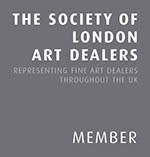
Charles Demuth American, 1883-1935
14 x 10 in
Provenance
[Knoedler & Co., New York]
Phillip A. Bruno, New York, acquired directly from the above, 1952
Debra Force Gallery, New York
Exhibitions
New York, Finch College Museum of Art, The Josephine and Phillip A. Bruno Collection, November 23, 1965 – January 9, 1966, p. 8; 27, no. 41, illus. (this exhibition traveled to Saint Paul, Minnesota, The Saint Paul Art Center, March 3 – May 15, 1966)
Tulsa, Oklahoma, Philbrook Art Center, Painters of the Humble Truth: Masterpieces of American Still Life, 1801 – 1939, September 27, 1981 – July 4, 1982, pp. 261 – 262, no. 11.9, illus.
London, JC Gallery, James Ward Presents: Seven Americans, 2024
Literature
Thomas E. Norton, ed. Homage to Charles Demuth: Still Life Painter of Lancaster (Ephrata, Pennsylvania: Science Press, 1978), p. 86, illus.
Born in Lancaster, Pennsylvania, Charles Demuth enjoyed a financially secure childhood.[i] He took classes at Drexel Institute in Philadelphia from 1903 until 1905, when he transferred to the Pennsylvania Academy of the Fine Arts and studied under Thomas Anshutz until 1910. Following a brief visit to Paris in 1907, he returned to the city in December 1912 to continue his artistic training at the Académie Moderne with independent study at the Académies Colarossi and Julian.
In Paris, Demuth met Marsden Hartley who introduced him to the writer Gertrude Stein and her brother, Leo, who were influential critics and collectors of European Modern art. Known for their Saturday salons for artists and writers, the Steins introduced Demuth to European Modernism, and their home was hung with works by Pablo Picasso, Paul Cézanne, and Henri Matisse, among others. During these early years, Demuth painted flower and figurative watercolors that reflected his interest in Modernism. He was particularly influenced by the Art Nouveau illustrations of Aubrey Beardsley, and in subject matter, he also began to focus on the nightlife of Paris and New York.
In 1914, upon his return to the United States, Demuth became involved with a group of avant-garde artists and writers in New York City known as the Arensburg Circle. It was through this association that he first met Marcel Duchamp, a major artist of the Dada movement.[ii] That year, Demuth had his first solo exhibition at the Daniel Gallery, where he would show until the gallery closed in 1932. The following years were filled with artistic creativity, and the young artist also began a series of book illustrations for Emile Zola’s novels. He continued to find inspiration in New York’s jazz clubs, especially in the vaudeville dancers, and explored other figurative watercolors with circus, nightclub, café, and Greenwich Village bathhouse themes.
Flowers, especially as a mode to explore color, also became an important part of his artistic practice beginning in 1915. The current example dates to this period where the artist manipulated both the floral motifs and the area surrounding them to create variations in color intensity, tone, and pattern. In Cylamen, the pencil sketch of the plant and flowers is fully rendered, and the majority of the composition is painted in watercolor. The contrast of warm and cool hues, as well as positive and negative space, result in a dynamic work, where the focus is on the visual expression of “introspection and emotional experience” rather than the details of the still life.[iii]
In 1922, after a severe diabetic attack left him physically weakened, Demuth moved to his mother’s house in Lancaster, where he maintained a small studio on the second floor. His health had been poor starting from a very young age, as he suffered from a lame foot as a boy, and as an adult, from chronic diabetes. While recuperating there over the next several years, he continued to create still life paintings in watercolor. Flowers from his mother’s garden and fruits and vegetables from the local Pennsylvania Dutch farmer’s markets comprised his chief subject matter.
Cylamen comes from the collection of Phillip A. Bruno. Born in Paris, Bruno attended Columbia University in New York, where he studied art history and architecture. His first position as a gallery assistant at Weyhe Gallery led to a life-long pursuit as a collector and art dealer. He was Director of Grace Borgenicht Gallery for five years followed by World House Gallery, co-director of Staempfli Gallery from 1960 until 1989, when he moved to Marlborough Gallery, where he remained until his retirement in 2007. He sold and collected both European and American Modernist artists and his clients included Joseph Hirshhorn, Roy Neuberger, and Duncan Phillips, among others.[iv]
[i] For information on Demuth, see Barbara Haskell, Charles Demuth (New York: Whitney Museum of American Art in association with Harry N. Abrams, 1987)
[ii] Members included the painter Francis Picabia and the writers Carl Van Vechten and Wallace Stevens, among others. Haskell, p. 36
[iii] Ibid., p. 52
[iv] https://www.aaa.si.edu/collections/interviews/oral-history-interview-phillip-bruno-15648 Accessed December 1, 2021
